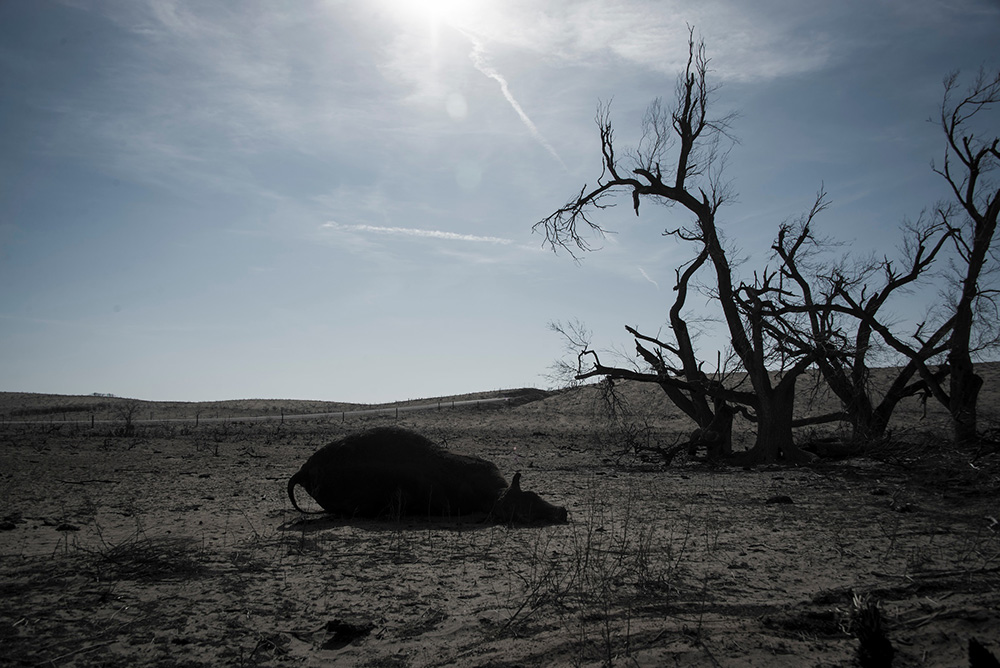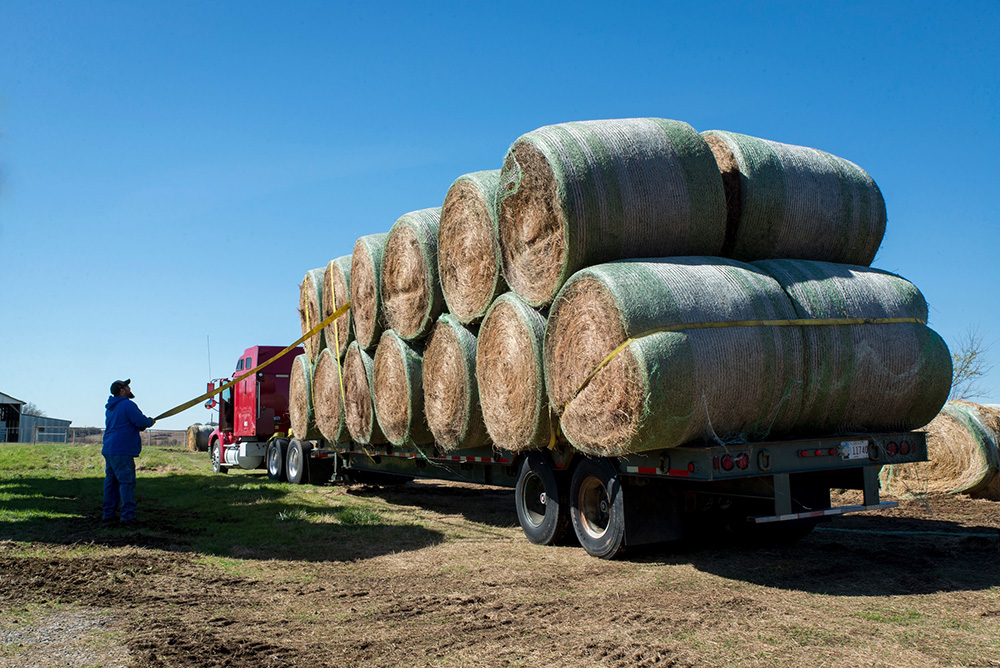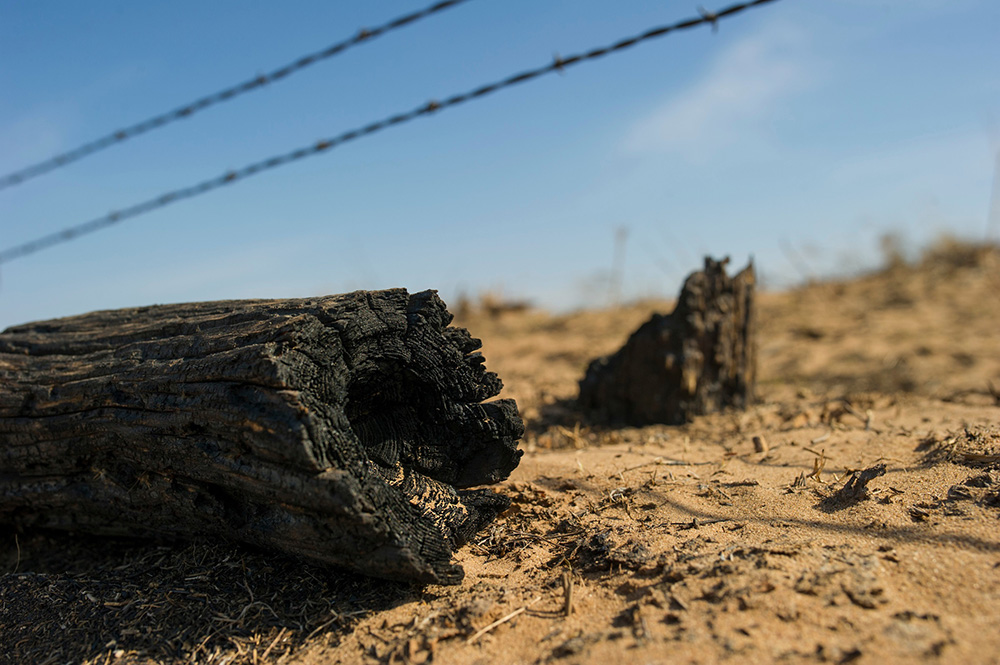March 7 wildfires left indelible mark, and yet no mark at all
Thursday, July 6, 2017
“And this too shall pass away” is an old adage about the human condition, and one that sums up so much about the March 7 wildfires that devastated numerous lives and more than 330,000 acres in Beaver, Harper and Woodward counties.
Affecting northwestern Oklahoma and continuing on into parts of southwestern Kansas, lives were lost, along with homes, barns, equipment and thousands of head of livestock. The ground was literally scorched, like some movie scene depicting the aftermath of a holocaust. Only this was not a movie.
The ash was so thick the windmill ponds were muddy with it. “There was basically no water in the ponds. You could pick [the ash] up and hold it in your hand,” said Buffalo cattle rancher Rusty Colten back in March.
And where the Oklahoma winds soon blew away that ash, what remained was bare, sandy soil exposed to the elements, leading to fears of yet more ecological problems reminiscent of the historic Dust Bowl days, just on a more minor scale.
In the middle of all of this was Derrell McBee, Oklahoma State University Cooperative Extension agricultural educator and Harper County Extension Office director. Almost immediately, McBee and his colleagues with the Oklahoma Cooperative Extension Service became ground zero for answers, insights and a contact for organizing much-needed help.
“When one of your clients who is also a good friend calls and is basically in tears on the phone and he has lost most of his 3,000 acres of grass pasture and hay, and you ask how he is doing, and his response is, oh, I’m okay; he is not okay,” McBee said. “It was heartbreaking.”
Making matters worse, the March 7 wildfires were the third in a series of hardships wrought by Mother Nature. The area suffered wildfire damage in November of 2016. Then there was a massive ice storm that left some rural families without power for 18 days in January.
“Then we turn around and burn off 150,000 acres and lose 3,000 head of cattle in Harper County with the March 7 wildfires,” McBee said. “In general, I think people outside the region knew things were bad but I’m not sure they really knew just how bad. I don’t think most people realized we had been hit hard three times in such a short period. To then see so many people across Oklahoma and beyond open their hearts and do whatever they could to help, well, that’s rural America, that’s our community, even if you’re halfway across the nation.”

In an inverse twist of author Charles Dickens' famous line: It was the worst of times, it was the best of times.
Dana Bay, Woodward County Extension agricultural educator, was supposed to be taking a well-earned vacation. She had turned in and gotten her leave approved and everything. But once the wildfires hit, her vacation spot quickly became the Harper County Extension Office, manning the phones, providing science-based solutions for recovery practices and helping to coordinate relief supplies and a host of much-needed services with public and private entities.
“The state of Oklahoma stepped up,” she said. “The nation stepped up. The farming community, ranching community, were just, I mean, their response was overwhelming. It restores your faith in humanity.”
Bay, McBee – whose own house had been spared by only a few hundred yards – and their colleagues were soon handling hundreds of phone calls per day from those wishing to help. Hay was trucked in from across the country, some producers providing the hay, others providing the transport and some doing both.
“There was this elderly gentleman from Wisconsin who told me he was coming, flat out like why on Earth would he not be coming, wanting to know where to take the hay,” McBee said. “His biggest concern was not any hardship the trip might make for him or his own small operation. He was focused on the practical and wanted to know what I knew about travel restrictions for hauling big loads of hay in the states between Oklahoma and Wisconsin.”
The need for hay and supplemental feed for surviving livestock, milk replacer for young calves that had lost their mothers, and fencing supplies to restore boundaries and protect wandering animals on what had become once again a wide open prairie quickly mushroomed. The words of the day – every day – were “more” and “fast.”
Araine Cash, Harper County Extension Office administrative assistant, said Extension worked with cooperating partners to organize hay drops of more than 20,000 bales, in addition to large amounts of fencing supplies, supplemental feed for livestock, and food and water for volunteers and families in need.
“The hours put in by volunteers were absolutely insane,” she said, “from those in agriculture, youth groups and everyday people just wanting to help.”
Cash herself would work at the county office in Buffalo and then drive down to Laverne, where she would help organize relief drop-off efforts at Tyree Ag, along with personnel from OSU Cooperative Extension, cooperating partners such as the Oklahoma Cattlemen’s Association and Oklahoma Department of Agriculture, Food and Forestry; local churches and civic organizations; regional agribusinesses; and employees of Tyree Ag itself, such as Office Manager Molly Green.
“Somebody was pretty much working around the clock,” Green said, who at one point had a front row seat of the wildfire, which passed the Tyree Ag complex just across the highway and then doubled back, eventually stopping a mere 50 yards away.
Green and her colleagues saw the flames doubling back, quickly called 9-1-1 and got to safety. In the aftermath, truckers dropping off their first loads of hay would take a long look at the charred surroundings and comment, “that got plenty close to you guys.”
“Yes, we would reply, and then we all would get on with what needed to be done to help those in need,” Green said. “It was close but there were so many others not as fortunate as us.”

Among those not so fortunate was the Shaffer family of Laverne, Oklahoma. Flames whipped across a large portion of Jim and Lana Shaffer’s family farm, enveloping the property in a thick haze of smoke as it burned. A 1997 graduate of OSU, Emily Jordan-Robertson of Camden, Arkansas, was on the phone to her former college roomie Lana soon after the news broke about the March 7 wildfires.
“We’re in construction so I had the truck and trailer, Lana and her family had the need; my husband agreed, there was no question I was coming,” Jordan-Robertson said. “No time is a good time to get away from work but for this, it was the right time. Lana and I were soon averaging four to five hay runs a day after I got to Laverne.”
J.W. Nokes and Mike Rodrigues of Yukon, Oklahoma, also were keen to do their part. Rodrigues had much-needed hay and Nokes had the trailer, so they loaded up the bales and made their way to the Western Equipment dealership in Woodward, one of the designated hay drops. Along the way, their vehicle blew a hose in Seiling.
“The guy at Fireball Automotive saw we were hauling hay for the relief effort, asked if we had eaten breakfast before leaving and then loaned us his pickup and gave us directions where to go eat while he fixed the hose,” Nokes said. “When we got back, the truck was fixed and he only charged us for the part, throwing in the labor for free just as he had the use of his pickup.”
Nokes and Rodrigues were two of a long line of people dropping off hay at Western Equipment and similar sites throughout the region. By the second week of March, more than 40 semi-trucks hauling trailers filled with gigantic round bales and countless smaller truck-and-trailer combos had dropped off hay bales at the Woodward site.
“At our height, we probably had 800 bales on hand at one time,” said Caleb Zook, Western Equipment general manager. “It was only a couple of days after it was announced that we were a drop-off point for hay bales before the first load started coming in, and then they kept on coming. It was something to see, all those hay bales; every one of them representing someone’s kindness and generosity.”
Zook, the brother-in-law of Dana Zook, OSU Cooperative Extension area livestock specialist headquartered in Enid, added area producers were quick to say thank you and have him pass on their appreciation to everyone who brought hay.
“I had a guy from Minnesota call wanting to donate hay,” he said. “He told me you guys must be tough as nails to live down here what with ice storms, wildfires, earthquakes and tornadoes. I said we are tough, but it’s really about the way other people pick you up when things go bad. I told him there is no place I would rather live, and it’s about the people.”
Harley Houston and Brennan Leighton of the OSU Division of Agricultural Sciences and Natural Resources’ Caddo Research Station in Ft. Cobb hauled in hay from the experiment station and also loaded up DASNR hay for other trucks to haul in.
“We had the hay, there was a need; it’s as simple as that,” the twosome said, finishing each other’s sentences in response. “Word came down quickly from DASNR Administration for everyone to do what we could.”

Immediately after the wildfires scorched their way through northwestern Oklahoma, southeastern Oklahoma Extension agricultural educators Justin McDaniel of the Pontotoc County Extension Office and Marty Montague of the Choctaw County Extension Office requested and received DASNR permission to hit the road and work for an extended period of time in Harper County as part of Extension’s ground-zero organizational relief efforts.
“I was on the phone non-stop during my week in Buffalo, mostly helping to match up those who had hay with those who had the necessary vehicles and trailers to haul it,” Montague said. “Justin and I would have stayed longer but we each had major events on the calendar that folks in our own areas of the state were counting on us to lead. But we did what we could and were happy to do it.”
Montague, McDaniel and Bay all spoke about how DASNR’s state and federally mandated land-grant mission is about helping people improve the quality of their lives, citing how the aftermath of the wildfires certainly was a time of desperate need.
“When you consider someone’s cow herd that they may have spent years or even generations building up the bloodlines they wanted, and then a fire comes through and wipes out the majority of it, your heart goes out to them,” Bay said. “They will come back, of course, they will build those herds again, but in some instances, it is like starting over from nothing.”
For Rusty Colten and his wife Jennifer, their two girls have seen them “down on the mat” and, more importantly, how one acts in times of adversity.
“They see you get back up,” Colten shared back in March. “If you have time to dust off, you do; if you don’t, you bristle up and go back in. Everything will go forward, everybody will pitch in and we will get along. Everybody is willing to do what they can and that is enough.”
Today, needed rainfall over the past few months has helped the grass return in Beaver, Harper and Woodward counties, but there are still indicators of the devastation, some of it subtle: fences were there were none, cattle grazing pasture that was nothing but blackened soil and ash not too long ago, and memories – good ones – about how a community that stretched across much of the nation came together to help those in need.
“Everything has its day,” McBee said. “What is news for a time becomes less important and even forgotten by the general public. We knew that from the start. But if you want to see us at our best, look what followed the March 7 wildfires. We have a lot of great neighbors, no matter how far away they live.”
The Oklahoma Cooperative Extension Service is one of two state agencies administered by Oklahoma State University’s Division of Agricultural Sciences and Natural Resources, along with the Oklahoma Agricultural Experiment Station system.
